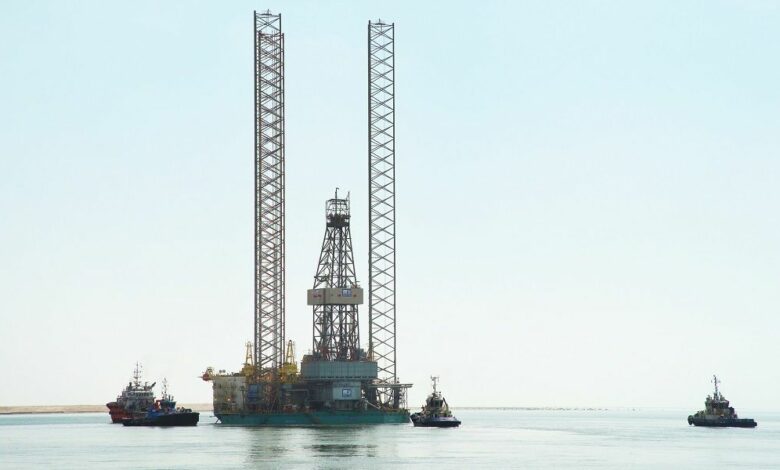Energy News Beat
Biggest increase since June 2021. And they mostly bought long-term Treasury debt. No major holder dumped.
All foreign investor entities combined, from central banks to private investors, massively bought US Treasury securities, increasing their holdings by $290 billion in February, the second largest month-to-month increase in the data going back to 2011, and the largest increase since June 2021, bringing their total holdings to a record $8.82 trillion. Compared to a year ago, their holdings soared by $818 billion (red line in the chart).
And they mostly bought long-term Treasury securities: Their holdings of them increased by $217 billion in February, the biggest increase since June 2021, to $7.5 trillion, showing strong interest and confidence in long-term Treasury debt. The data was released by the Treasury Department today.
The buying was across the board, with all major holders adding to their positions: The top six financial centers combined (UK, Belgium, Luxembourg, Switzerland, Cayman Islands, Ireland = blue), the Euro Area (green), Japan, (gold), China and Hong Kong (purple), along with the other major holders not shown in the chart, Canada, Taiwan, India, and Brazil.

Higher yields create demand. Yields of US Treasury securities have remained relatively high compared to the securities of other countries. The 10-year Treasury yield is currently at 4.28%, compared to the German 10-year yield of 2.51%, the Japanese 10-year yield of 1.20%, or the Canadian 10-year yield of 3.08%. One of the exceptions is the UK 10-year yield, at 4.61%.
These higher yields for Treasury securities make them very attractive to foreign buyers. We saw that this buying continued at the 10-year and 30-year Treasury auctions last week, and at the 20-year Treasury auction today: There was blistering demand from “indirect bidders,” a category that includes foreign bidders.
Euro Area v. China + Hong Kong.
China and Hong Kong combined added $41 billion to their holdings in February, bringing them to $1.05 trillion. Over the past 12 months, they’ve added $66 billion to their holdings. But since the 2015 peak, they’ve shed nearly one-third of their holdings (blue).
The countries of the Euro Area added $52 billion in February and $253 billion over the past 12 months, bringing their holdings to a record $1.83 trillion. The tightly-knit currency and economic area is the largest holder of US Treasury debt, and the largest creditor of the US.
The biggest holders in the Euro Area are the financial centers (Luxembourg, Ireland, Belgium, see further below) and France, whose banking system also functions as a global financial center.

Japan’s holdings jumped by $47 billion in February. It thereby recaptured nearly all the declines since April 2024 that resulted from its efforts to prop up the yen, which had plunged.
Since 2012, Japan’s Treasury holdings rose and fell, and currently are where they were in 2012:

The six largest financial centers added $42 billion in Treasury securities in February (+1.6%) and $285 billion over the past 12 months, to $2.60 trillion, just a hair below the record of September 2024. Since 2012, their holdings have more than tripled!
These countries specialize in handling the financial holdings of global companies, individuals, and governments. Ireland is a favorite for US Big Pharma and Big Tech to store their profits. So a portion of the holdings at these financial centers are actually held for US entities, and not by foreign investors. The United Kingdom here is the “City of London,” one of the top financial centers in the world.
Increases in February, and total holdings. Switzerland was the only exception:
- United Kingdom: +$10 billion, to $750 billion
- Luxembourg: +$3 billion, to $412 billion
- Cayman Islands: +$13 billion to $418 billion
- Ireland: +9 billion to $339 billion
- Belgium (home of Euroclear): +$17 billion to $395 billion
- Switzerland: -$10 billion to $291 billion.

The United Kingdom added $10 billion in February and $39 billion over the past 12 months, bringing its holdings to $750 billion. The UK is also included in the list above of the top 6 financial centers, but it’s by far the biggest and deserves its own chart:

Canada’s holdings spiked by $55 billion in February, bringing them to a record $406 billion. Since March 2021, holdings have nearly quadrupled! Since 2012, holdings have octupled!

France’s holdings jumped by $17 billion in February, and by $83 billion from a year ago, to a record $354 billion. Banking in Paris also functions as a financial center.

Taiwan’s holdings rose by $4 billion in February and by $37 billion year-over-year to a record $295 billion:

India added $2 billion in February, after three months of unloading, bringing its holdings to $228 billion, still down by $7 billion year-over-year. Since 2012, its holdings have sextupled:

Even Brazil increased its holdings by $8 billion in February, to $207 billion, after relentlessly reducing its holdings for years in part to prop up the Brazilian real. From the peak in 2018, its holdings have fallen by 36%:

Enjoy reading WOLF STREET and want to support it? You can donate. I appreciate it immensely. Click on the mug to find out how:


The post Foreign Investors Massively Bought US Treasury Securities in February: China, Japan, Canada, Euro Area, UK, Financial Centers, Taiwan, India, even Brazil appeared first on Energy News Beat.





































